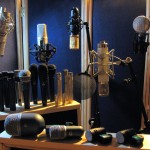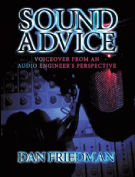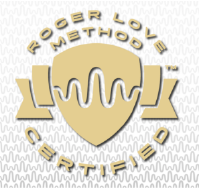 A radio or television commercial is more than just words. The space between the lines helps to determine pace and establish mood. Space allows the mix engineer to create an environment in which the voice exists and where music and/or sound effects can be placed to help tell the story and communicate the message. This space and these elements are often key to the production.
A radio or television commercial is more than just words. The space between the lines helps to determine pace and establish mood. Space allows the mix engineer to create an environment in which the voice exists and where music and/or sound effects can be placed to help tell the story and communicate the message. This space and these elements are often key to the production.
Scripts often indicate that sound effects and music will play a key role at certain points within in a radio or TV production. These notes are great for the producer or engineer who mixes the spot. They give the mix engineer a clear idea of what the intentions of the client are and what the client is expecting to hear when the spot is finished.
However, what happens all too often is that the script is over written, leaving little or no time available for these elements to develop. They simply can’t have the impact they were intended to have. If a script, read out loud, is taking all of the time available, then what time is left for the music and sound effects to perform their role? Worse yet, the voice talent may feel forced to alter their speed or delivery to accommodate these elements. This may prevent the voice talent from communicating the message in the most effective way possible.
While there is little doubt that the message (the actual spoken words) should be the focus of most commercial audio productions, writing less copy provides space for music and sound effects to help communicate that message. In fact, these elements combined with the delivery of the voice talent, can often do more to communicate the overall message than including additional words in a script.
Radio and TV spots must fit into a specific time frame, usually :30 (:29.5 for TV) or :60 seconds. While these times are important, taking the time that will be needed for music and sound effects into consideration while writing and preparing a script can also be critical to your bottom line. The time saved in the studio by having a carefully written and timed script before recording begins, is time and therefore money saved.
Clients may insist on getting all of their critical information into a spot. But ultimately, clients want people to act (or buy something). Creative “ear catching” commercials are often more memorable and influential then a long string of words being forced upon a listener. The space between the lines, allows creativity to flourish.
Even if additional elements are not part of your radio or TV commercial, proper spacing and pacing will allow the listener to think about and hopefully act on what is being communicated to them.
 I live in what I think (and many will agree) is one of the most beautiful parts of the USA. However, all that lush forest and beautiful foliage brings with it pollen, allergens, and air so thick you can watch it as it blows by. For most people, allergy season is merely a nuisance. For
I live in what I think (and many will agree) is one of the most beautiful parts of the USA. However, all that lush forest and beautiful foliage brings with it pollen, allergens, and air so thick you can watch it as it blows by. For most people, allergy season is merely a nuisance. For  While there are many elements to producing great voiceovers, few are as important as the room you produce them in. While it is important to carefully evaluate the sound of your room when it is completed, there are some basic things to consider in the beginning that will help ensure your space will sound great in the end. Here are some quick tips on choosing and creating your VO space.
While there are many elements to producing great voiceovers, few are as important as the room you produce them in. While it is important to carefully evaluate the sound of your room when it is completed, there are some basic things to consider in the beginning that will help ensure your space will sound great in the end. Here are some quick tips on choosing and creating your VO space. Why am I writing this blog post? Because I want to remind you to take the time to stop and consciously ask yourself, “why?”. “Why?” is a question that we often forget to ask ourselves as we go about our day or do our jobs. Typically, we either know the answer (or think we do) based on past experience or we simply do what we always do out of habit. We also have a tendency to do things because someone told us to, but without asking ourselves why doing what they said is the right thing to do. Taking the time to ask and answer this simple question can be very enlightening. It can also help you make better decisions about gear, deliveries, production and maybe even your life… but today, we’ll just focus on your career.
Why am I writing this blog post? Because I want to remind you to take the time to stop and consciously ask yourself, “why?”. “Why?” is a question that we often forget to ask ourselves as we go about our day or do our jobs. Typically, we either know the answer (or think we do) based on past experience or we simply do what we always do out of habit. We also have a tendency to do things because someone told us to, but without asking ourselves why doing what they said is the right thing to do. Taking the time to ask and answer this simple question can be very enlightening. It can also help you make better decisions about gear, deliveries, production and maybe even your life… but today, we’ll just focus on your career.


